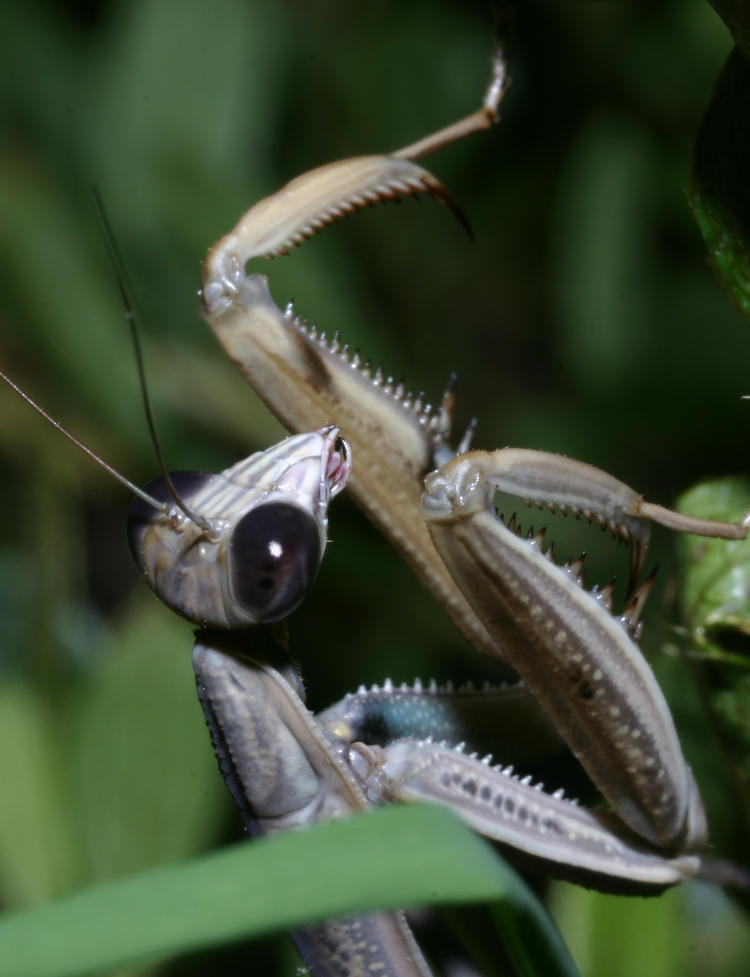I had plans for a particular offering for this ‘last’ post in the topic, but it’s been taking longer than I have time for, and so we have this instead, though the original choice will appear later on – it’s in progress and one of those things that you shouldn’t rush.
So our opening image is from July 2012:

This is a Chinese mantis (Tendoera sinensis) of course, and taken right out in front of where we used to live. There’s nothing terribly compelling about this image, or at least not now, because it came early on in my extended pursuit of the species – it shows how the eyes darken at night, and gives a hint of the facets of the compound eyes which I would later capture in much better detail. The reason that I selected this image is because it came a few months earlier than the next:

In fact, this was taken exactly ten years ago today, part of the reason I chose it. This is an orchid mantis (Hymenopus coronatus,) and not at all native, hailing from southeast Asia instead, though my travel to get this image was considerably less than implied, since it was on display at the Museum of Life & Science in Durham – the only time, in fact, that I’ve seen them out on display. And yes, I did the best I could to provide similar poses among the self-imposed constraints of this post, because I do things like that – don’t ask why, and you won’t embarrass either of us.
Mantids of any kind are cool of course, but some varieties around the world are particularly stunning in terms of their camouflage and appearance, and I did what I could with the terrariums of the museum, but wanted to get a lot more images. This may take place some day: orchid mantises are available for sale, though not cheaply, and of course would almost certainly have to be shipped. The egg case would be the best manner of shipping, except that they’re not native so no one needs a few hundred of them to house and feed while preventing escapes, even if it is only for the season (March through October, generally – mantids are only summer insects.) Not to mention that, if they’re charging nearly $50 for an individual, no one’s going to sell an entire egg case.
However, my brother did bring me down two egg cases from New York, and I suspect these are European mantids which I’ve never seen around here, so perhaps in the spring I may have some slightly different species to tackle.
But back to the topic. Visible differences? Well, color and head shape, obviously, and I unfortunately could not get a decent full-body shot of the orchid mantis for better comparisons. One visible difference is actually incorrect: the top one was shot at night, the bottom one at midday, but the macro flash was enough to illuminate the close background of the Chinese mantis and disguise the darkness, while it was inadequate to get any background for the orchid mantis, which is fine because it would have been the exterior of the terrarium in the museum. Do the orchid mantis eyes go dark at night as well? I have no reason to believe otherwise, but no proof either – the security at the museum is too good. The mantids were pretty comparable in size, but their antennae are significantly different, don’t ask me why.
So, another of this topic will slide in eventually, but perhaps not before we begin a new yearly topic. What will that be? Ah, you just have to wait (mostly because I don’t actually know yet myself.)




















































